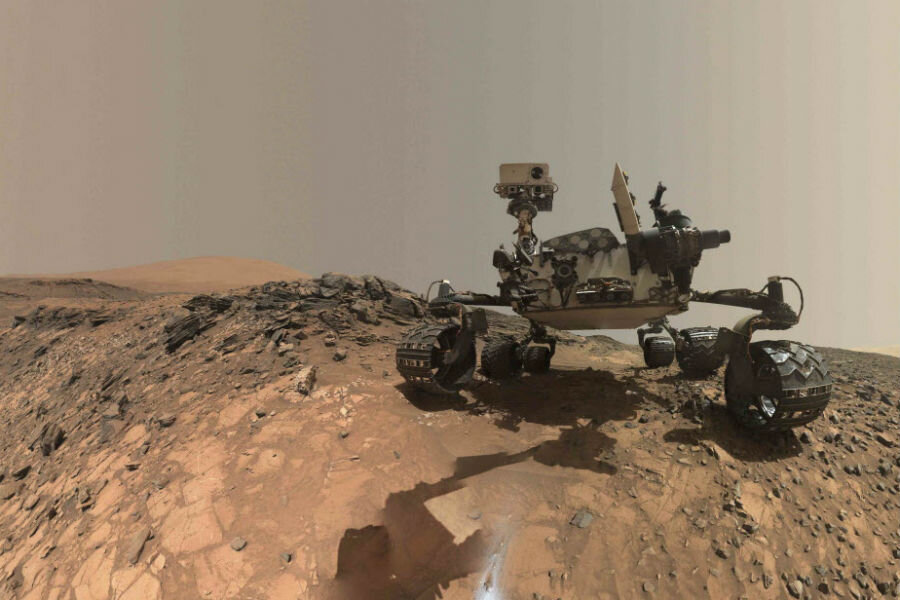What's next for NASA's Curiosity Mars rover?
Loading...
Since landing on Mars a little more than four years ago, NASA's Curiosity rover has discovered evidence of water, found clues that the planet once had conditions conducive to hosting microbial life, and expanded scientists' understanding of seasonal changes on the Red Planet.
Now, after spending more than two years exploring the plains of Mars near Gale Crater and the base of Mount Sharp – most recently, the month-long study of tall rock formations in an area known as Murray Buttes – the rover is continuing its ascent up the three-mile-high mountain.
"Bidding good-bye to 'Murray Buttes,' Curiosity's assignment is the ongoing study of ancient habitability and the potential for life," said Curiosity Program Scientist Michael Meyer in a recent news release. "This mission, as it explores the succession of rock layers, is reading the 'pages' of Martian history – changing our understanding of Mars and how the planet has evolved."
The most recent drill site is in a geological layer approximately 600 feet thick, called the Murray formation, according to NASA. So far, after climbing nearly half of the formation's thickness, Curiosity has discovered that it is made up primarily of mudstone that was formed from the kind of mud found at the bottom of ancient lakes. These findings suggest that the lake environment on Mars was enduring, scientists said.
As the rover makes its way through the upper half of the Murray formation, a journey expected to take about a year, project scientists say they hope to find out whether the record of lakes continues further up. This will give them a better understanding of how long the lakes were around for, and whether the environment changed over time.
Next up for the rover is a ridge capped with material rich in the iron-oxide mineral hematite, which lies about 1.5 miles ahead on Mount Sharp. After that, Curiosity will explore an exposure of clay-rich bedrock.
The journey to these destinations may be slow: It took more than a year for the rover to travel five miles from its landing site to the base of Mount Sharp. In the meantime, astronomy buffs can satiate their appetite for Mars with the hundreds of photos taken by the rover in recent weeks.
"We continue to reach higher and younger layers on Mount Sharp," said Curiosity Project Scientist Ashwin Vasavada of NASA's Jet Propulsion Laboratory in a statement. "Even after four years of exploring near and on the mountain, it still has the potential to completely surprise us."






